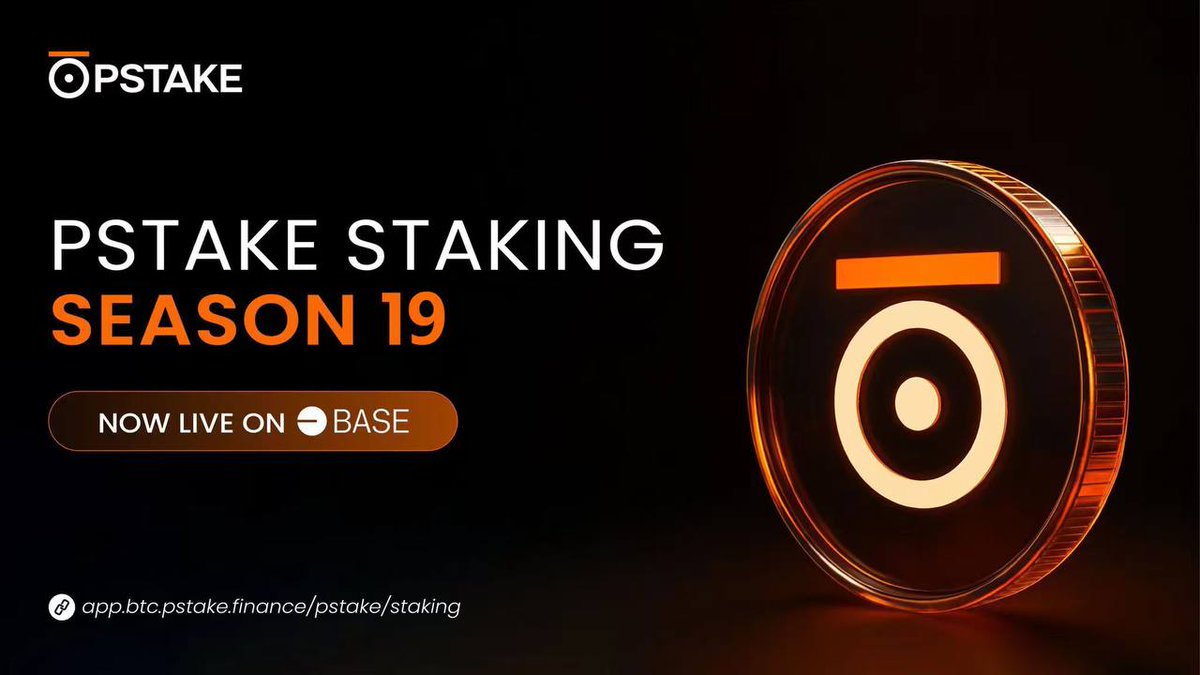Cena pSTAKE Finance
w USD

Informacje o pSTAKE Finance

Zastrzeżenie
OKX nie udziela rekomendacji dotyczących inwestycji ani aktywów. Musisz dokładnie rozważyć, czy handel lub posiadanie aktywów cyfrowych jest dla Ciebie odpowiednie w świetle Twojej sytuacji finansowej. W przypadku pytań dotyczących konkretnej sytuacji skonsultuj się ze swoim doradcą prawnym, podatkowym lub specjalistą ds. inwestycji. Aby uzyskać więcej informacji, zapoznaj się z warunkami użytkowania i ostrzeżeniem o ryzyku. Korzystając z witryny internetowej strony trzeciej („TWP”), akceptujesz, że wszelkie korzystanie z TPW będzie podlegać warunkom TPW i będzie regulowane przez te warunki. O ile nie zostało to wyraźnie określone na piśmie, OKX i jego podmioty stowarzyszone („OKX”) nie są w żaden sposób powiązane z właścicielem lub operatorem TPW. Zgadzasz się, że OKX nie ponosi odpowiedzialności za jakiekolwiek straty, szkody i inne konsekwencje wynikające z korzystania z TPW. Pamiętaj, że korzystanie z TPW może spowodować utratę lub zmniejszenie Twoich aktywów. Produkt może nie być dostępny we wszystkich jurysdykcjach.
Wydajność ceny pSTAKE Finance
pSTAKE Finance na mediach społecznościowych
Przewodniki

Utwórz bezpłatne konto OKX.
Zasil swoje konto.
Wybierz swoją kryptowalutę.
Najczęściej zadawane pytania pSTAKE Finance
pSTAKE Finance (PSTAKE) to płynny protokół stakingu zbudowany na blockchainie Persistence. Platforma umożliwia użytkownikom płynne i wydajne stakowanie swoich aktywów, w tym natywnych monet z różnych łańcuchów bloków.
Jedną z kluczowych zalet pSTAKE Finance jest możliwość odblokowania wartości postawionych monet. Użytkownicy otrzymują wtórne tokeny reprezentujące ich stakowane aktywa, uczestnicząc w płynnym protokole stakingu platformy. Tokeny te mogą być swobodnie wykorzystywane w różnych zdecentralizowanych protokołach finansowych (DeFi), zapewniając użytkownikom dodatkowe możliwości zdobywania nagród i maksymalizacji ich użyteczności w ekosystemie DeFi.
Tokeny pSTAKE można łatwo kupić na platformie kryptowalutowej OKX. Dostępne pary handlowe w terminalu handlu spot OKX obejmują PSTAKE/USDT.
Zamień swoje istniejące kryptowaluty, w tym Bitcoin (BTC), Ethereum (ETH), Tether (USDT) i USD Coin (USDC), na pSTAKE bez opłat i bez poślizgu cenowego za pomocą OKX Convert.
Pogłąb wiedzę o pSTAKE Finance
pSTAKE Finance (PSTAKE) jest czołowym graczem w szybko rozwijającym się sektorze zdecentralizowanych finansów (DeFi). Podczas gdy kryptowaluty były tradycyjnie ograniczone do długoterminowego inwestowania i krótkoterminowego handlu, pojawienie się DeFi wprowadziło szeroką gamę zdecentralizowanych usług bankowych. Wśród tych usług staking stał się popularnym wyborem, przyciągając liczne projekty w tej przestrzeni. pSTAKE Finance wyróżnia się jako innowacyjna platforma stakingowa, oferująca swoim użytkownikom unikalne funkcje i funkcjonalności.
Czym jest pSTAKE Finance?
pSTAKE Finance to płynne rozwiązanie do stakingu, które ma na celu uwolnienie pełnego potencjału tokenów PoS poprzez zapewnienie płynności dla stakowanych aktywów. Protokół został zaprojektowany w celu wyodrębnienia wartości bazowej aktywów stakowanych w łańcuchach PoS.
Jedną z unikalnych cech pSTAKE Finance jest dystrybucja nagród za stakowanie w pTOKENS, niezależnie od natywnego łańcucha zdeponowanych aktywów. Protokół współpracuje z uznanymi walidatorami z różnych łańcuchów L1, w tym Stake-fish, Chorus One i Everstake, zapewniając niezawodność i bezpieczeństwo procesu stakingu.
Zespół projektowy pSTAKE Finance
Zespół projektowy pSTAKE Finance składa się z założycieli Tushara Aggarwala i Deepanshu Tripathiego. Aggarwal zajmuje również stanowisko CEO w Persistence, podczas gdy Tripathi pełni funkcję CTO. Ponadto w skład zespołu wchodzą kierownik projektu Mikhil Pandey i kierownik inżynierii Kamlesh Parikarath Marar.
Jak działa pSTAKE Finance?
pSTAKE Finance działa poprzez zapewnianie wsparcia sieciom PoS poprzez przechowywanie tokenów pSTAKE. Użytkownicy mogą zdeponować swoje aktywa w sieci pSTAKE, umożliwiając im wybicie tokenów pochodnych ERC-20, które są powiązane 1: 1 z oryginalnymi aktywami.
Te tokeny pochodne mogą być wykorzystywane w ekosystemie DeFi Ethereum, umożliwiając użytkownikom maksymalizację zysków. Co więcej, te tokeny pochodne można rozszerzyć na wiele sieci blockchain w oparciu o takie czynniki, jak wykorzystanie, płynność i inne względy.
Deponując aktywa na platformie pSTAKE, użytkownicy mają tę zaletę, że mogą szybko wyjść ze swoich pozycji bez żadnego okresu oczekiwania. Funkcja ta jest korzystna w przypadku nagłych wahań cen, umożliwiając użytkownikom szybkie reagowanie na zmiany rynkowe.
PSTAKE: natywny token pSTAKE Finance
PSTAKE to natywna kryptowaluta pSTAKE Finance, która została uruchomiona pod koniec lutego 2022 roku. Całkowita i maksymalna podaż tokenów PSTAKE wynosi 500 milionów. Należy jednak podkreślić, że podaż tokenów PSTAKE w obiegu wynosi zaledwie 44,3 miliona, co stanowi około 8,87% całkowitej kryptowaluty w obiegu.
Przypadki użycia tokenów PSTAKE
Podstawowym przypadkiem użycia tokena PSTAKE jest staking, jak sugeruje jego nazwa. Dodatkowo, token może być wykorzystywany do handlu, inwestowania, pożyczania i zapewniania płynności na zdecentralizowanych giełdach (DEX).
Dystrybucja tokenów PSTAKE
PSTAKE rozprowadziło swoje tokeny w celu wsparcia wzrostu i rozwoju projektu.
Dystrybucja tokenów wygląda następująco:
- Dwadzieścia sześć procent przeznaczono na fundusz rozwoju pStake.
- Dwadzieścia procent jest zarezerwowane dla skarbu firmy.
- Dwadzieścia procent jest przeznaczone na sprzedaż strategiczną.
- Szesnaście procent jest przeznaczone dla głównego zespołu.
- Sześć procent jest przeznaczone na nagrody retroaktywne.
- Pięć procent jest zarezerwowane wyłącznie na sprzedaż publiczną.
- Trzy procent jest przeznaczone dla stakerów XPRT.
- Dwa procent przeznaczono na platformę startową Alpha.
- Dwa procent jest przeznaczone na bootstrapping protokołu.
pSTAKE Finance: Innowacyjny protokół stakingu
pSTAKE Finance to innowacyjny protokół stakingowy, który oferuje unikalne możliwości dla użytkowników w sektorze DeFi. Dzięki pSTAKE Finance użytkownicy mogą zmaksymalizować swoje zarobki, wykorzystując te same monety, aby zarobić podwójną kwotę. Umożliwia im to odblokowanie dodatkowych możliwości i dalsze korzystanie z funkcji DeFi. Dla osób, które chcą czerpać zyski z przestrzeni DeFi, pSTAKE Finance jest projektem wartym rozważenia i zbadania.
Ujawnienie ESG




































